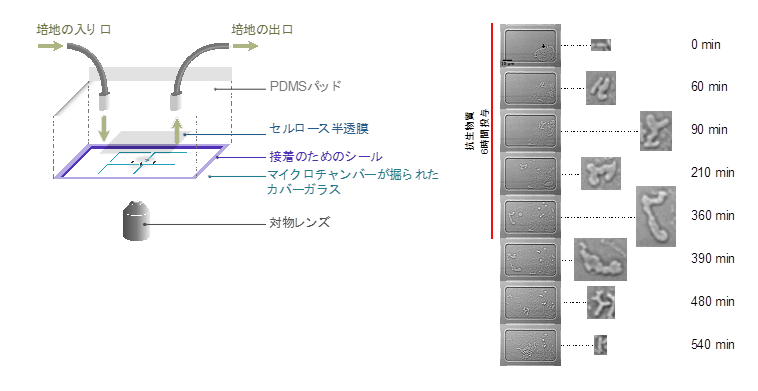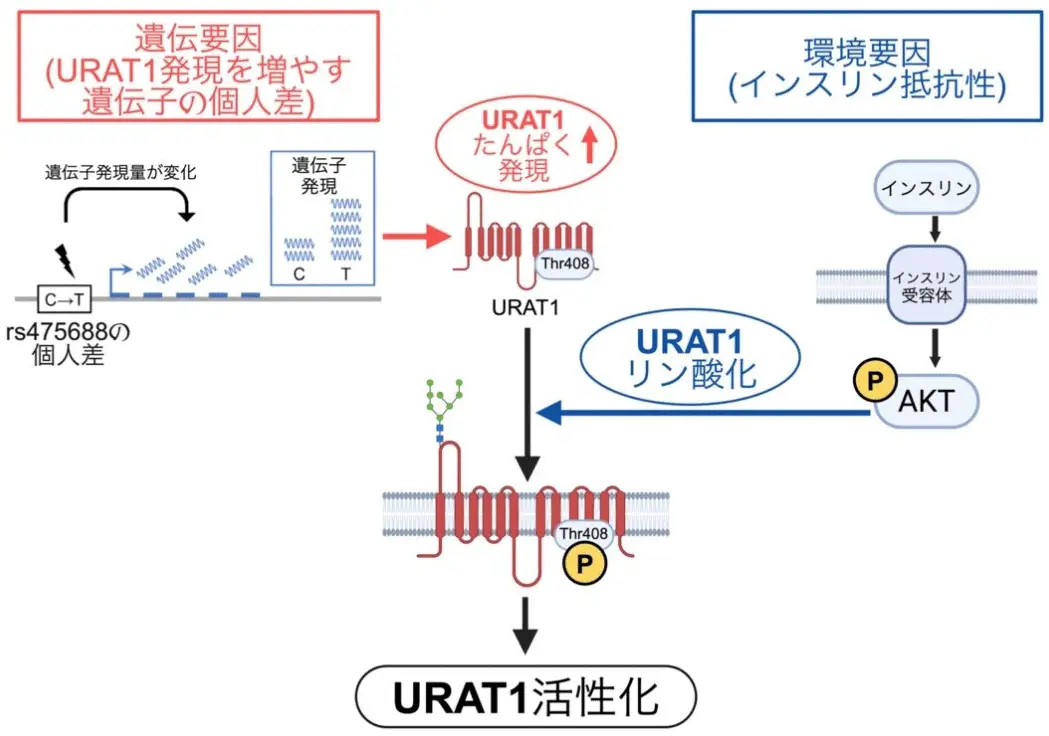2025-05-16 東京大学

MCMAデバイスと生存細胞の例
<関連情報>
- https://www.c.u-tokyo.ac.jp/info/news/topics/20250516140000.html
- https://elifesciences.org/articles/79517
抗菌薬持続性における多様な生存様式を明らかにする難分解性細胞履歴の観察 Observation of persister cell histories reveals diverse modes of survival in antibiotic persistence
Miki Umetani,Miho Fujisawa,Reiko Okura,Takashi Nozoe,Shoichi Suenaga,Hidenori Nakaoka,Edo Kussell,Yuichi Wakamoto
eLife Published:May 13, 2025
DOI:https://doi.org/10.7554/eLife.79517
Abstract
Bacterial persistence is a phenomenon in which a small fraction of isogenic bacterial cells survives a lethal dose of antibiotics. Although the refractoriness of persistent cell populations has classically been attributed to growth-inactive cells generated before drug exposure, evidence is accumulating that actively growing cell fractions can also generate persister cells. However, single-cell characterization of persister cell history remains limited due to the extremely low frequencies of persisters. Here, we visualize the responses of over one million individual cells of wildtype Escherichia coli to lethal doses of antibiotics, sampling cells from different growth phases and culture media into a microfluidic device. We show that when cells sampled from exponentially growing populations were treated with ampicillin or ciprofloxacin, most persisters were growing before antibiotic treatment. Growing persisters exhibited heterogeneous survival dynamics, including continuous growth and fission with L-form-like morphologies, responsive growth arrest, or post-exposure filamentation. Incubating cells under stationary phase conditions increased both the frequency and the probability of survival of non-growing cells to ampicillin. Under ciprofloxacin, however, all persisters identified were growing before the antibiotic treatment, including samples from post-stationary phase culture. These results reveal diverse persister cell dynamics that depend on antibiotic types and pre-exposure history.
Editor’s evaluation
The manuscript reports on the single cell evaluation of E. coli persisters under antibiotics. Typically, persisters are rare cells and only very few have been directly observed in non mutated strains. Therefore, the current work adds an important contribution by mapping a higher numbers of persisters and by convincingly identifying different persister phenotypes. The main conclusions are along previous reports, namely that persisters under β-lactams are mainly non-growing cells from stationary conditions, but if cultures are carefully kept away from stationary phase conditions, the few residual persisters observed in this study display different phenotypes involving growing cells and L-forms.


